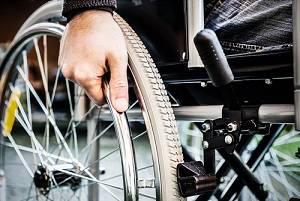Researchers to Test Technology That May Help Paralyzed People Walk
 Victims of truck accidents, pedestrian accidents, bicycle accidents, and motorcycle accidents are more vulnerable than other drivers when it comes to severe injury. Paralysis, caused by spinal cord injuries, are especially common. For most, this means a complete change of life, a decreased life expectancy, and possibly even heavy reliance on a loved one and/or medical professionals. But what if there was an option that allowed them to function a little more independently? A way to help them walk again?
Victims of truck accidents, pedestrian accidents, bicycle accidents, and motorcycle accidents are more vulnerable than other drivers when it comes to severe injury. Paralysis, caused by spinal cord injuries, are especially common. For most, this means a complete change of life, a decreased life expectancy, and possibly even heavy reliance on a loved one and/or medical professionals. But what if there was an option that allowed them to function a little more independently? A way to help them walk again?
Advancements in Technology Have Paved the Way
Over the last few years, technology has made rapid advancements that have enabled at least some form of movement for paralyzed patients. One of the more recent was the development of robotic limbs that patients controlled with their minds. But the surgery required to place such devices has relied heavily on brain surgery, which carries its own set of risks. To complicate matters further, the surgery may not be successful for every patient. These shortcomings were what researchers hoped to eliminate with the development of their tiny metallic implant.
A Tiny Implant and a Robotic Exoskeleton
When a Florey Institute of Neuroscience and Mental Health researcher was challenged with the development of a device that was small enough and flexible enough that it could be implanted with minimal risk, but strong enough to control an entire human exoskeleton, he was told it could not be done. And yet he managed to create a device that could be easily implanted into a vein in the groin, threaded to the brain, and then recorded at 190 hertz – an electrical signal that is just as strong as those found in more invasive brain surgery procedures, and could, theoretically, be strong enough to code an entire external skeleton. That skeleton could possibly give paralyzed patients the chance to walk again.
Of course, there is still a lot of testing to be done. In fact, the measurements have only been tracked on sheep thus far; human trials are not set to begin until 2017, and researchers expect at least six to seven years of such testing before they can make the technology available to the public. But, if successful, it could mean that the lives of victims may be just a little less altered after an accident.
Compensation Would Still Be Critical for Victims
Those who are severely injured in an accident are sometimes entitled compensation to cover the cost of their medical bills, loss of income, and diminished quality of life. That right to compensation would continue to exist, even if the exoskeleton technology became available. Because it is about more than just the loss of mobility; it is about the pain and suffering, the rising cost of healthcare treatment, and the emotional trauma experienced during the years and decades following an accident.
If you or someone you love has been severely injured in an accident, the skilled and experienced Milwaukee personal injury attorneys at Gimbel, Reilly, Guerin & Brown, LLP can help. Dedicated, compassionate, and resourceful, we understand just how deeply your life has been changed, and we will fight to ensure your rights are protected and that you and your loved ones receive the compensation you deserve. To get started, call us at 414-271-1440 and schedule your consultation today.
Sources:
http://www.futurity.org/stentrode-exoskeleton-paralysis-1102412/
http://www.nbcnews.com/health/health-news/mind-controlled-robot-arm-gives-new-freedom-paralyzed-man-n362741







